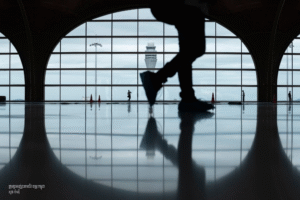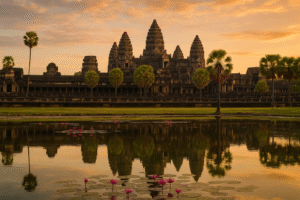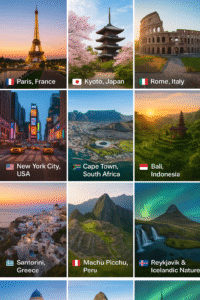
🏯 Why Visit Kyoto?
Kyoto, once the imperial capital of Japan for over a thousand years, remains the country’s cultural and spiritual heart. Unlike Tokyo’s modern skyscrapers and neon lights, Kyoto offers a serene atmosphere steeped in tradition. The city is home to more than 1,600 Buddhist temples, 400 Shinto shrines, exquisite gardens, and historic districts where centuries-old traditions are still alive. Visitors can experience the elegance of geisha culture, take part in time-honored tea ceremonies, or simply wander through narrow stone-paved streets lined with wooden machiya houses. Beyond its heritage, Kyoto also embraces modern comforts, making it a city where the past and present coexist beautifully.
🌟 Top Attractions in Kyoto
- Fushimi Inari Taisha
One of Kyoto’s most iconic sites, this shrine is famous for its thousands of bright red torii gates that snake up Mount Inari. The pathway through these gates is both spiritual and visually striking. Dedicated to Inari, the Shinto god of rice and prosperity, it’s a must-visit for both cultural enthusiasts and photographers. - Kinkaku-ji (Golden Pavilion)
This breathtaking Zen temple is covered entirely in gold leaf and sits gracefully beside a reflective pond surrounded by manicured gardens. Its shimmering golden exterior is one of the most recognized images of Japan and a symbol of Kyoto’s refined beauty. - Arashiyama Bamboo Grove
A walk through Arashiyama’s towering bamboo stalks feels otherworldly. The rustling sound of the swaying bamboo creates a calming effect. Visitors can also explore nearby attractions like the Iwatayama Monkey Park, Tenryu-ji Temple, and the picturesque Togetsukyo Bridge spanning the Katsura River. - Gion District
Kyoto’s historic entertainment quarter, Gion, is where visitors might catch a glimpse of geisha or maiko (apprentice geisha) hurrying between traditional teahouses. Strolling through its lantern-lit streets at dusk offers a magical step back in time. - Kiyomizu-dera Temple
This UNESCO World Heritage Site is renowned for its massive wooden stage that juts out over the hillside, offering panoramic views of Kyoto. Depending on the season, visitors can enjoy cherry blossoms in spring or fiery maple leaves in autumn.
🍵 Cultural Experiences
Kyoto is the ideal city to immerse yourself in Japanese traditions. Take part in a tea ceremony inside a traditional teahouse, where every gesture and movement follows centuries-old rituals. Rent a kimono and wander through historic districts, temples, or gardens for a truly authentic experience. For a deeper connection, join a Zen meditation session at one of the city’s many Zen temples to find inner peace.
🍜 What to Eat in Kyoto
Kyoto’s cuisine reflects its refined culture. Try kaiseki ryori, a beautifully presented multi-course meal that highlights seasonal ingredients. Don’t miss matcha desserts, as Kyoto is Japan’s green tea capital. Another specialty is yudofu, a simple yet comforting hot tofu dish often enjoyed near temple areas.
🗓️ Best Time to Visit
Kyoto is stunning year-round. Spring (March–April) draws travelers for its breathtaking cherry blossoms, while autumn (October–November) paints the city in fiery reds and golds. Winter offers a quiet, serene charm with fewer crowds, and summer brings vibrant festivals such as the world-famous Gion Matsuri.
🚄 How to Get There
Reaching Kyoto is easy. From Tokyo, the Shinkansen (bullet train) takes just 2 hours and 30 minutes. International travelers can fly into Kansai International Airport (KIX) in Osaka, then take a direct train or bus to Kyoto in about 1.5 hours.
👉 Final Thoughts
Kyoto is the perfect destination for travelers who want to experience the heart of Japanese culture. Whether you’re wandering through ancient shrines, sipping matcha in a traditional teahouse, or capturing the fleeting beauty of cherry blossoms, Kyoto leaves every visitor with memories that last a lifetime.


